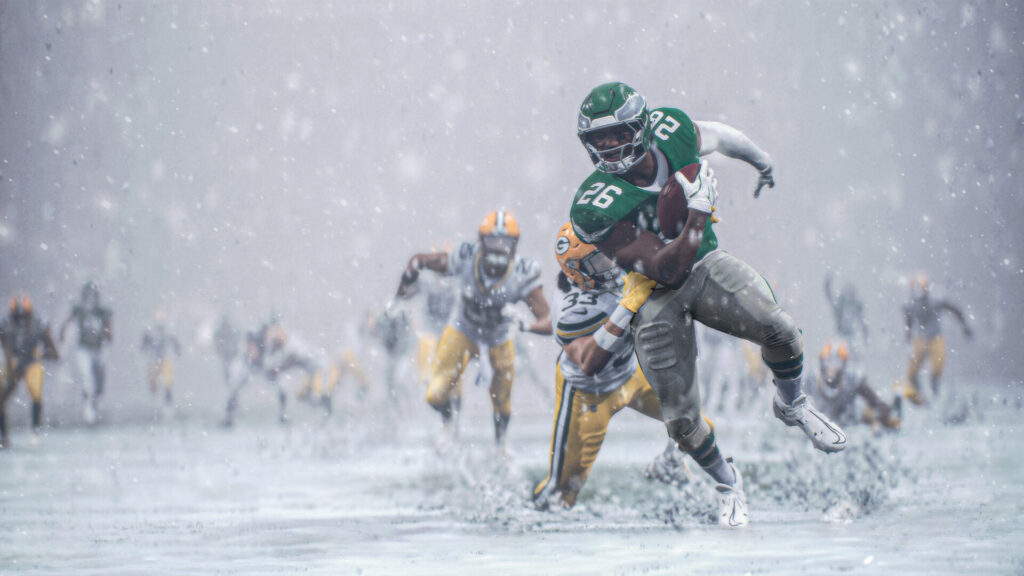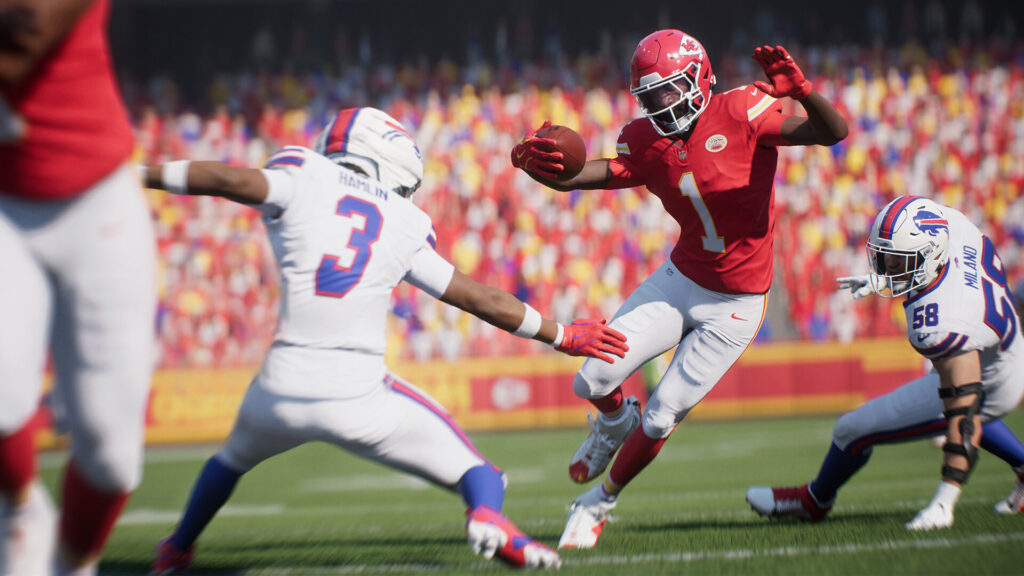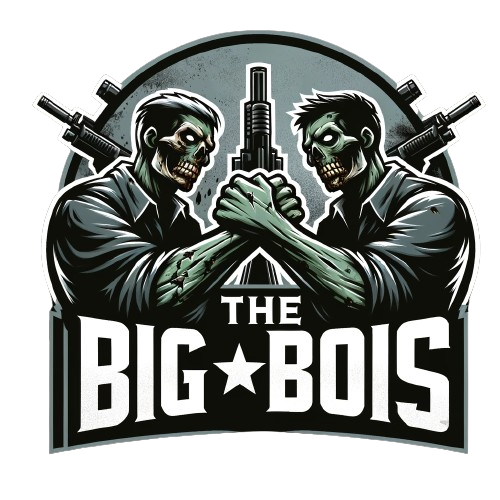It’s that time of year again — the leaves are changing, preseason is winding down, and EA’s latest Madden installment has hit the field. But this year’s Madden NFL 26 comes with a twist: it’s built on a new AI-powered gameplay system that claims to make every snap feel more authentic, and for the first time, it’s running on the Nintendo Switch 2.
After spending over 30 hours with the game on the new handheld console hybrid, I can say this: Madden NFL 26 is easily the most mechanically ambitious and visually refined football experience in years — but it’s still plagued by some of the same old playbook problems that have defined the franchise for over a decade.
Built from Sundays – AI-Powered Realism
Let’s start with the big headline feature. Madden 26 leverages nearly a decade of real NFL data through a new machine learning system that aims to mimic genuine player tendencies, coach strategies, and on-field decision-making.
In practice, this actually works — mostly. Quarterbacks like Mahomes and Burrow play like their real-life counterparts, making smarter throws and improvising under pressure. Defenses adjust on the fly, calling more adaptive counters that feel organic rather than scripted.
EA calls it “Coach DNA”, and while it sounds like marketing buzz, there’s real substance here. Opposing teams recognize repeat play calls and begin adjusting their coverage accordingly. You’ll need to mix up your offense or risk becoming predictable. It’s subtle, but for longtime Madden players, it’s a welcome step toward true simulation football.
That said, some of the old animation-based issues still linger. Tackles sometimes look awkward, and player collisions still rely too heavily on canned animations instead of physics-based interactions. The new AI-driven decision-making can make the game feel smarter — but the bodies still move like they’re trapped in last-gen glue at times.

Explosive Gameplay & Player Feel
On Switch 2, the game’s performance is surprisingly solid. EA promised 60 frames per second gameplay, and aside from occasional dips in high-action moments, it delivers. The player animations are smoother than ever, and transitions between plays feel more natural.
This version also benefits from the handheld’s haptic triggers and adaptive feedback. Feeling your controller rumble differently when you break through a tackle versus when you fumble in the rain adds a tactile immersion that was completely absent in older versions.
Running the ball is more enjoyable this year thanks to improved cutback and spin mechanics. Passing feels tighter, and interceptions — while still frustrating — are less frequent than in Madden 25. The new Wear & Tear System adds depth, forcing you to rotate players to avoid fatigue or injuries. It’s a small detail that has a big strategic impact in Franchise Mode.
Franchise Mode – Still the Star Player
Despite EA’s history of neglecting its offline player base, Franchise Mode has quietly become Madden 26’s strongest feature. Managing rosters feels meaningful again. The modernized depth chart system lets you assign positional roles with more nuance, and weekly planning is no longer just a checklist of drills.
Scouting still isn’t perfect — it remains shallow compared to games like MLB The Show or Football Manager — but it’s improved enough to matter. Stats across the league also feel more balanced this time around. Simulated games produce realistic scores, yardage, and standings, which longtime fans will appreciate.
Even more impressive is how dynamic the world feels. Between updated player models, team traditions like the Skol Chant in Minnesota, and halftime shows hosted by Scott Hanson, Franchise Mode feels like a genuine living season.
Still, this is EA, and you’ll find your fair share of quirks — from player stat bugs (like Travis Hunter not recording offensive stats when listed as CB) to the occasional physics mishap where a deflected pass ricochets absurdly out of bounds. But none of these are dealbreakers.
Presentation & Atmosphere
This year’s Madden nails the small details that immerse you in Sunday football. Stadium lighting, sideline activity, and weather conditions all look spectacular on Switch 2’s OLED screen.
The new Football Weather feature is more than just visual flair — it impacts gameplay directly. Heavy snow reduces visibility, rain leads to fumbles, and fog alters the passing game. For the first time in years, the weather doesn’t just look pretty; it forces you to adapt your strategy.
Audio is also stronger than ever. Commentary remains a weak point (as always), but crowd reactions, on-field chatter, and team-specific chants give each matchup its own energy. The soundtrack, too, is easily one of the best Madden playlists in recent memory — energetic, modern, and surprisingly varied.

Madden Ultimate Team (MUT) – The Necessary Evil
No Madden review would be complete without touching on EA’s most controversial cash cow. MUT returns, and while it’s still built around microtransactions, there are small quality-of-life improvements.
Card packs open faster, menus are smoother, and the new Player Progression Tracks make grinding less tedious. Still, the in-game economy heavily favors those willing to spend real money. For casual players, MUT remains an expensive time sink rather than a rewarding mode.
It’s worth noting that the game’s store is clearly labeled with “optional purchases,” but let’s be real — MUT is anything but optional if you want to stay competitive online.
Performance on the Nintendo Switch 2
This is the first mainline Madden game to hit a Nintendo console in over a decade, and it’s a surprisingly strong debut. The Switch 2’s upgraded hardware allows Madden 26 to run near parity with the PS5 and PC versions — a massive step up from the watered-down “Legacy Editions” of the past.
The touchscreen interface even adds a neat twist: you can call plays or adjust audibles with quick swipes. Handheld mode performance is stable at 30–45fps, while docked mode averages 60fps with minimal frame drops.
The only real downside is battery drain — extended sessions eat through the handheld’s power faster than most games. Still, Madden 26 on Switch 2 proves that EA can finally bring its flagship sports title to a portable platform without compromise.
Progress, but Still Playing Catch-Up
Madden NFL 26 is the best entry in the series in over a decade — and the first one in years that feels like more than just a roster update. The AI improvements genuinely change how you play, Franchise Mode has real life again, and the weather system adds a layer of unpredictability that makes each game memorable.
Yet, the old issues remain: animation quirks, uneven physics, and the ever-present shadow of microtransactions. EA has built a solid foundation here, but the game still feels like it’s one major breakthrough away from true greatness.
On the Switch 2, Madden 26 is a technical triumph — smooth, beautiful, and feature-complete — proving that handheld sports gaming can still feel premium. Whether you’re a die-hard fan or someone returning after a long hiatus, this year’s edition is worth a shot.

Pros:
- AI-driven gameplay feels fresh and unpredictable
- Weather and stadium details are immersive
- Franchise Mode finally feels alive again
- Solid performance on Switch 2
- Great soundtrack and visual polish
Cons:
- Persistent animation and physics issues
- MUT still leans too hard into microtransactions
- Commentary remains dull
- Some minor bugs in Franchise
EA SPORTS Madden NFL 26: Madden NFL 26 won’t silence the critics, but for the first time in years, it feels like EA’s listening. Built from Sundays — and finally built with some real heart. – Asmodeus


